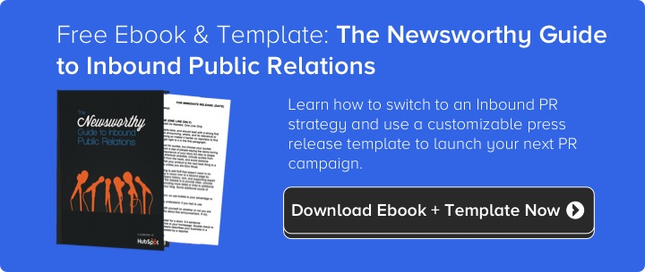
The original purpose of a press page made sense — it housed general company information and timely news in a central location for consumers, clients, potential clients, the media, and other interested parties. The press page was created to answer such questions as:
- Who are new clients you’re working with or what projects did you just finish?
- How are you contributing to the community through philanthropic activities?
- Who was recently hired at the company?
This made sense during a time when people were learning and consuming information in a linear fashion. Now enter the digital age of social media, blogs and mobile devices that create unique digital interactive experiences.
The traditional press page starts to collect dusty pixels. Why? There are so many other engaging online channels that support the dissemination of information. The type of information being shared hasn’t changed — the way people seek out and consume content has changed.
What People Are Doing Differently
1) Passively Finding Information on Social Media
Think about how most people interact online today — especially on their mobile devices. It’s more common for someone to open a social media app and read through news than to open a website and seek out that information. Ask yourself: Why would someone spend their screen time searching one organization’s news or press page when they’ll get a broader view of today’s events in social media?
A modern approach to disseminating information is to share newsworthy material to your audience via social channels. For example, LinkedIn is a business based tool, so sharing who was recently hired at the company on this channel is likely to net you more views and be seen by those who are most interested in knowing.
2) Actively Searching Online
Many people start their web experience with a search engine. Depending on the nature of their search and the refined keywords they use, they may end up on a news detail page of your website, thus bypassing the press page altogether. If you’ve optimized all of the content on your website, including an often updated press area, it’s more likely a person will land on a detail page and not your homepage.
Someone may discover your business because they were searching for information on a recent philanthropic event or philanthropic-related topic for which you have a high-ranking, optimized news article or photo album.
3) Expecting Easy Web Experiences
We’ve reached a critical mass of people expecting simple, clean experiences on the web. Website navigations have been streamlined and basic information is in an easy-to-find location on the site. It’s not reasonable to expect that a site visitor will dig deep into your press page. If your website visitors expect to easily find clients you work with or projects you’ve completed, have a section dedicated to “Our Work” or “Portfolio.”
How to Build a Modern Press Page
Yes, you can still have a press page on your website and it can still bring value to you. The secret to its success is in how you disseminate the information. Here are a few tips on how to build a press page:
1) Cross-promote relevant content on your website.
If you’ve reached an important milestone with a client, write a brief article about this experience and tag it to appear in the “Our Work” or “Portfolio” section of your site. People are seeking out relevant information, so having cross-promoted content on your site is important.
Also, if the reader found that article relevant and is interested in additional information, they may navigate to your press area. Having a well-organized page will allow the reader to find other pertinent content.
2) Give the reader the ability to share.
When people read content they think others will find valuable, they share it on their social channels. Let your advocates disseminate your news by adding sharing buttons to the content in press area.
Again, if someone in their network finds the information useful, they may also navigate back to your site and seek out additional content in your press area.
3) Push out the content to other distribution channels.
Use social media to share important news, recent events, and other interesting tidbits. Provide a link that drives the reader back to the detail page on your website.
If you haven’t already guessed, just like the first two tactics, if the reader finds the content interesting, they will find more helpful information in the press area.
The press page is still a hub of information, but it’s not likely the primary source people will use to find out more about your organization. Modernize your press page to serve your key target audiences and those interested in learning more and willing to seek out the detailed information.
Want to learn more on how to optimize your press page? Download our quick tip sheet here.
![]()




